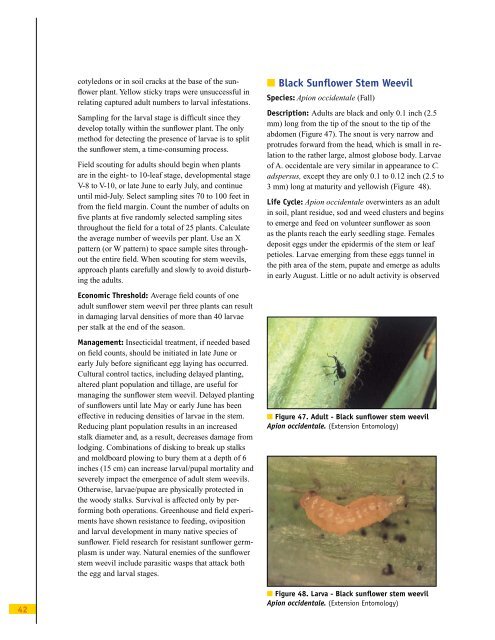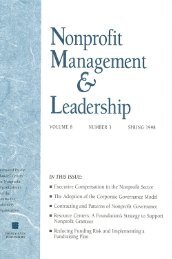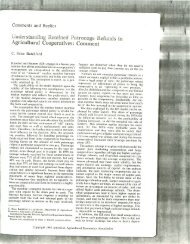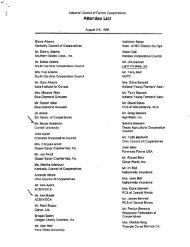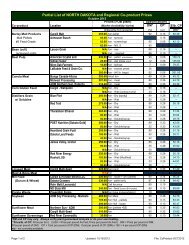Sunflower Production Field Guide - Your "Home Page"
Sunflower Production Field Guide - Your "Home Page"
Sunflower Production Field Guide - Your "Home Page"
You also want an ePaper? Increase the reach of your titles
YUMPU automatically turns print PDFs into web optimized ePapers that Google loves.
42<br />
cotyledons or in soil cracks at the base of the sunfl<br />
ower plant. Yellow sticky traps were unsuccessful in<br />
relating captured adult numbers to larval infestations.<br />
Sampling for the larval stage is diffi cult since they<br />
develop totally within the sunfl ower plant. The only<br />
method for detecting the presence of larvae is to split<br />
the sunfl ower stem, a time-consuming process.<br />
<strong>Field</strong> scouting for adults should begin when plants<br />
are in the eight- to 10-leaf stage, developmental stage<br />
V-8 to V-10, or late June to early July, and continue<br />
until mid-July. Select sampling sites 70 to 100 feet in<br />
from the fi eld margin. Count the number of adults on<br />
fi ve plants at fi ve randomly selected sampling sites<br />
throughout the fi eld for a total of 25 plants. Calculate<br />
the average number of weevils per plant. Use an X<br />
pattern (or W pattern) to space sample sites throughout<br />
the entire fi eld. When scouting for stem weevils,<br />
approach plants carefully and slowly to avoid disturbing<br />
the adults.<br />
Economic Threshold: Average fi eld counts of one<br />
adult sunfl ower stem weevil per three plants can result<br />
in damaging larval densities of more than 40 larvae<br />
per stalk at the end of the season.<br />
Management: Insecticidal treatment, if needed based<br />
on fi eld counts, should be initiated in late June or<br />
early July before signifi cant egg laying has occurred.<br />
Cultural control tactics, including delayed planting,<br />
altered plant population and tillage, are useful for<br />
managing the sunfl ower stem weevil. Delayed planting<br />
of sunfl owers until late May or early June has been<br />
effective in reducing densities of larvae in the stem.<br />
Reducing plant population results in an increased<br />
stalk diameter and, as a result, decreases damage from<br />
lodging. Combinations of disking to break up stalks<br />
and moldboard plowing to bury them at a depth of 6<br />
inches (15 cm) can increase larval/pupal mortality and<br />
severely impact the emergence of adult stem weevils.<br />
Otherwise, larvae/pupae are physically protected in<br />
the woody stalks. Survival is affected only by performing<br />
both operations. Greenhouse and fi eld experiments<br />
have shown resistance to feeding, oviposition<br />
and larval development in many native species of<br />
sunfl ower. <strong>Field</strong> research for resistant sunfl ower germplasm<br />
is under way. Natural enemies of the sunfl ower<br />
stem weevil include parasitic wasps that attack both<br />
the egg and larval stages.<br />
■ Black Sunfl ower Stem Weevil<br />
Species: Apion occidentale (Fall)<br />
Description: Adults are black and only 0.1 inch (2.5<br />
mm) long from the tip of the snout to the tip of the<br />
abdomen (Figure 47). The snout is very narrow and<br />
protrudes forward from the head, which is small in relation<br />
to the rather large, almost globose body. Larvae<br />
of A. occidentale are very similar in appearance to C.<br />
adspersus, except they are only 0.1 to 0.12 inch (2.5 to<br />
3 mm) long at maturity and yellowish (Figure 48).<br />
Life Cycle: Apion occidentale overwinters as an adult<br />
in soil, plant residue, sod and weed clusters and begins<br />
to emerge and feed on volunteer sunfl ower as soon<br />
as the plants reach the early seedling stage. Females<br />
deposit eggs under the epidermis of the stem or leaf<br />
petioles. Larvae emerging from these eggs tunnel in<br />
the pith area of the stem, pupate and emerge as adults<br />
in early August. Little or no adult activity is observed<br />
■ Figure 47. Adult - Black sunfl ower stem weevil<br />
Apion occidentale. (Extension Entomology)<br />
■ Figure 48. Larva - Black sunfl ower stem weevil<br />
Apion occidentale. (Extension Entomology)


